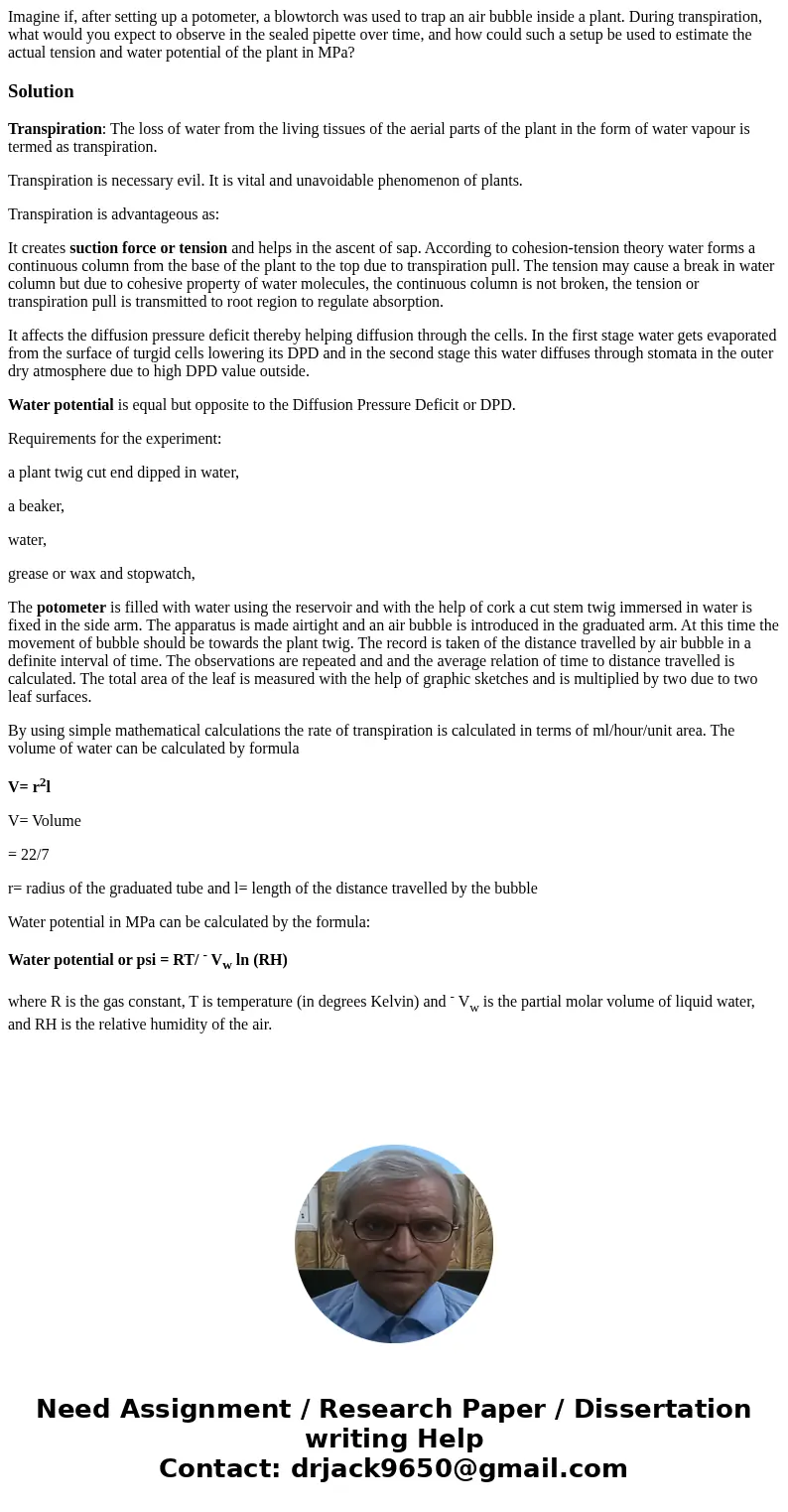Imagine if after setting up a potometer a blowtorch was used
Imagine if, after setting up a potometer, a blowtorch was used to trap an air bubble inside a plant. During transpiration, what would you expect to observe in the sealed pipette over time, and how could such a setup be used to estimate the actual tension and water potential of the plant in MPa?
Solution
Transpiration: The loss of water from the living tissues of the aerial parts of the plant in the form of water vapour is termed as transpiration.
Transpiration is necessary evil. It is vital and unavoidable phenomenon of plants.
Transpiration is advantageous as:
It creates suction force or tension and helps in the ascent of sap. According to cohesion-tension theory water forms a continuous column from the base of the plant to the top due to transpiration pull. The tension may cause a break in water column but due to cohesive property of water molecules, the continuous column is not broken, the tension or transpiration pull is transmitted to root region to regulate absorption.
It affects the diffusion pressure deficit thereby helping diffusion through the cells. In the first stage water gets evaporated from the surface of turgid cells lowering its DPD and in the second stage this water diffuses through stomata in the outer dry atmosphere due to high DPD value outside.
Water potential is equal but opposite to the Diffusion Pressure Deficit or DPD.
Requirements for the experiment:
a plant twig cut end dipped in water,
a beaker,
water,
grease or wax and stopwatch,
The potometer is filled with water using the reservoir and with the help of cork a cut stem twig immersed in water is fixed in the side arm. The apparatus is made airtight and an air bubble is introduced in the graduated arm. At this time the movement of bubble should be towards the plant twig. The record is taken of the distance travelled by air bubble in a definite interval of time. The observations are repeated and and the average relation of time to distance travelled is calculated. The total area of the leaf is measured with the help of graphic sketches and is multiplied by two due to two leaf surfaces.
By using simple mathematical calculations the rate of transpiration is calculated in terms of ml/hour/unit area. The volume of water can be calculated by formula
V= r2l
V= Volume
= 22/7
r= radius of the graduated tube and l= length of the distance travelled by the bubble
Water potential in MPa can be calculated by the formula:
Water potential or psi = RT/ - Vw ln (RH)
where R is the gas constant, T is temperature (in degrees Kelvin) and - Vw is the partial molar volume of liquid water, and RH is the relative humidity of the air.

 Homework Sourse
Homework Sourse